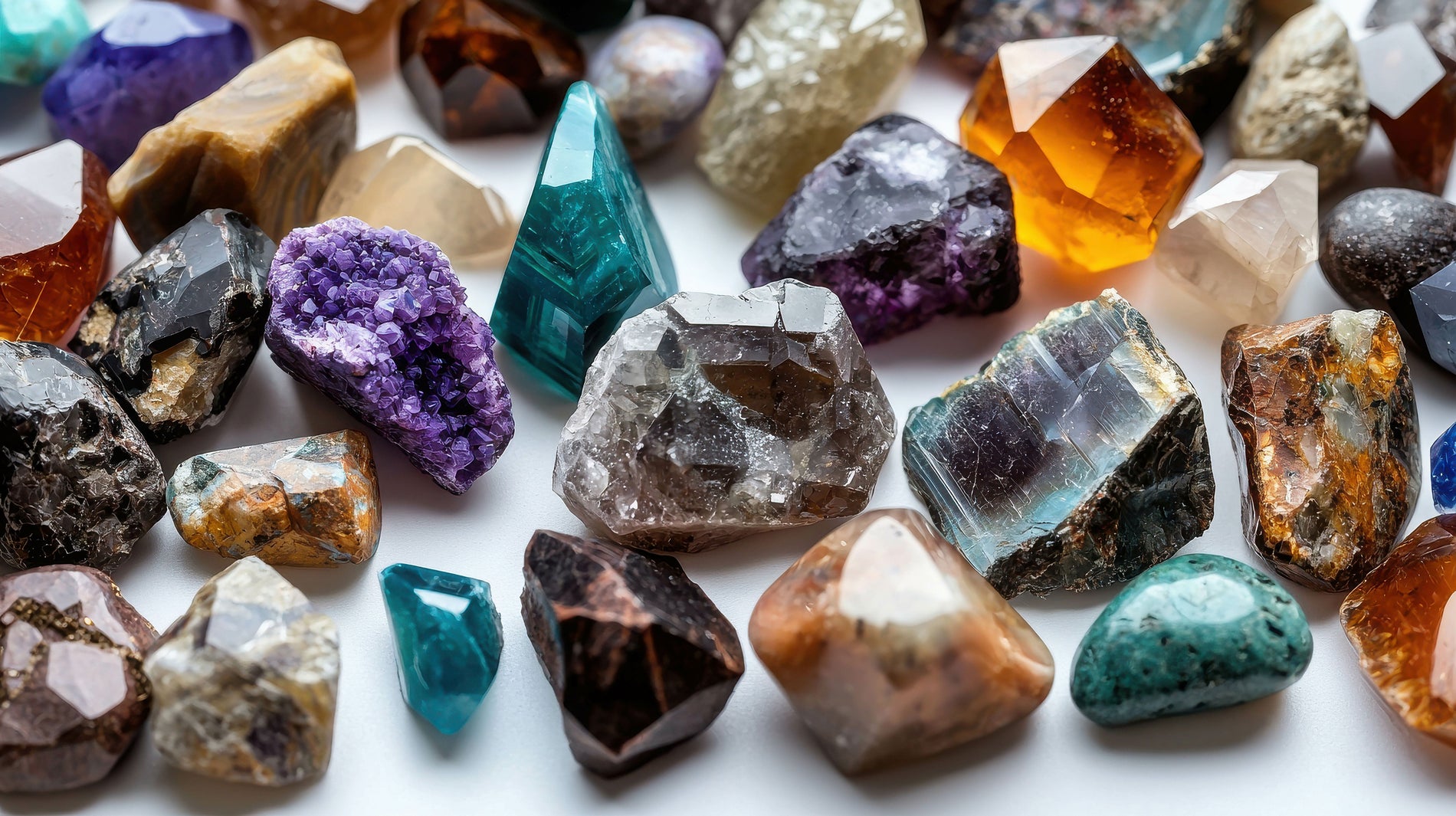The vibrant hues of emeralds, sapphires, and rubies have long symbolized opulence, but their journey from mine to market often conceals a legacy of ecological harm and human exploitation. As global awareness of sustainability grows, ethically sourced gemstones are emerging as a transformative force in the jewelry industry. By prioritizing transparency, fair labor practices, and environmental regeneration, these gemstones redefine luxury as a catalyst for positive change. This shift not only safeguards ecosystems and uplifts marginalized communities but also aligns with a new generation of consumers who demand accountability alongside beauty.
Environmental Benefits: Healing Ecosystems Through Responsible Practices
Reducing Land Degradation and Biodiversity Loss
Traditional gemstone mining frequently employs destructive methods such as open-pit excavation and river dredging. In Madagascar, a leading source of sapphires, unregulated mining has degraded 90% of the island’s riparian zones, threatening endemic species like the critically endangered golden bamboo lemur. Ethical sourcing mitigates this damage through regulated small-scale mining. For example, the Fairtrade-certified Merelani tanzanite mines in Tanzania limit excavation depth to 30 meters and mandate land rehabilitation, replanting native acacia trees to stabilize soil and restore habitats.
Water conservation is another critical advantage. Artisanal emerald mining in Colombia traditionally uses 15,000 liters of water per carat to wash sediment, often contaminating rivers with silt and chemicals. In contrast, the Muzo Emerald Company’s closed-loop water system recycles 95% of processing water and uses biodegradable solvents, reducing consumption to 300 liters per carat.
Cutting Carbon Emissions and Pollution
Gemstone mining accounts for 1.2% of global carbon emissions, largely from diesel-powered machinery and long-haul transportation. Ethical producers like Greenland Ruby use hydropower to operate mines and prioritize local cutting centers, slashing emissions by 65% compared to conventional supply chains. Additionally, mercury and cyanide—common in informal gold and gemstone processing—are banned under ethical certifications, preventing toxic runoff. In Zambia’s Kagem emerald mine, solar-powered processing plants and chemical-free extraction methods have eliminated mercury use entirely, protecting the Luangwa River ecosystem.
Promoting Circular Practices
Ethical sourcing extends beyond extraction to include post-consumer recycling. Brands like Gemfields recover gemstones from vintage jewelry, repurposing them into new designs without additional mining. Their "Gemstone Recovery Program" has diverted 12,000 carats of Zambian emeralds from landfills since 2020, reducing demand for new mining by 8%.
Social Benefits: Empowering Communities and Ensuring Equity
Eradicating Exploitative Labor Practices
An estimated 40% of colored gemstones are mined informally, often using child labor. In Myanmar’s Mogok region, children as young as 12 work 12-hour days in ruby mines, earning less than $2 daily. Ethical certifications like the Responsible Jewellery Council (RJC) mandate age verification and fair wages, transforming labor conditions. The Tanzanian Women’s Mining Collective, a Fairtrade partner, employs 1,200 women in sapphire mining, providing childcare, literacy programs, and wages 300% higher than local averages.
Funding Community Development
Ethical mining initiatives reinvest profits into local infrastructure. For every carat sold, the Gemological Institute of America’s (GIA) "Source Verify" program allocates 5% to community projects. In Sri Lanka’s Ratnapura sapphire region, this has funded six schools and a maternal health clinic, reducing child mortality by 22% since 2019. Similarly, Pala International’s Malawi sapphire mine sponsors microloans for women-led farms, boosting agricultural output by 40% and diversifying local economies.
Preserving Indigenous Rights
Indigenous lands hold 70% of the world’s gemstone deposits, yet mining often occurs without consent. Ethical frameworks require Free, Prior, and Informed Consent (FPIC), empowering communities to negotiate terms. In Australia’s Northern Territory, the Gumatj people partnered with Rio Tinto to mine sapphires on their ancestral lands, securing 15% royalties and veto power over sacred sites.
Economic Benefits: Building Resilient Markets
Stabilizing Prices Through Traceability
The colored gemstone market has historically suffered from opacity, with prices fluctuating by 300% due to undisclosed treatments and origins. Blockchain traceability platforms like Everledger provide immutable records from mine to retailer, reducing speculation. Since 2022, traced Colombian emeralds have seen price volatility drop to 12%, compared to 75% for untraced stones.
Capturing Premium Market Share
Ethically sourced gemstones command price premiums of 20–50%, appealing to conscientious consumers. A 2024 McKinsey study found 68% of luxury buyers under 40 prioritize ethical certifications, driving a 35% annual growth in this niche. Brands like Tiffany & Co. now source 100% of their colored gemstones from RJC-certified mines, reporting a 22% revenue increase in their high jewelry division.
Strengthening Local Economies
Small-scale ethical mining fosters economic resilience. In Montepuez, Mozambique, ruby mining co-ops employ 10,000 workers and contribute 18% of the province’s GDP. By partnering with Gemfields, these co-ops have transitioned from subsistence digging to mechanized mining, tripling productivity while funding regional roads and power grids.
Case Studies: Ethical Sourcing in Action
- The Colombian Emerald Revolution: Once synonymous with conflict, Colombia’s emerald industry has rebranded through ethical practices. The Muzo and Chivor mines now operate under strict environmental protocols, including reforestation of 500 hectares and zero-waste processing. Their "Emeralds for Peace" initiative directs 10% of profits to demining former FMLA territories, creating safe land for farming.
- Montana Sapphires: A Model for Domestic Sourcing: Montana’s Rock Creek sapphire mine, the first Fairtrade-certified mine in the U.S., uses recirculating water systems and solar energy to produce 30,000 carats annually. The mine funds scholarships for Native American students and partners with Tiffany & Co. to market "Born in the USA" sapphires, which sell for 40% above market rate.
- Sri Lanka’s Ethical Moonstone Revival: In Meetiyagoda, a historic moonstone mining region, ethical cooperatives have replaced child labor with mechanized pumps and safety training. The "Lanka Gem" collective, certified by the World Fair Trade Organization, exports 80% of its production to European designers, doubling miners’ incomes since 2021.
Conclusion: The Future of Ethical Gemstones
Ethically sourced gemstones prove that luxury need not come at the cost of human suffering or ecological ruin. By embracing traceability, equitable partnerships, and regenerative practices, the industry can transform into a vehicle for global good. Consumers wield immense power in this shift—each purchase of a responsibly mined sapphire or emerald directly funds cleaner rivers, safer workplaces, and thriving communities. As certifications become mainstream and blockchain technology ensures accountability, ethical gemstones will cease to be a niche and instead set the standard for a jewelry industry where every facet reflects integrity.
Citations
- International Union for Conservation of Nature (IUCN), Madagascar Mining Impact Report, 2023.
- Fairtrade International, Tanzanite Mining Case Study, 2024.
- Muzo Companies, Sustainability Report, 2023.
- Greenland Ruby, Carbon Neutral Certification, 2024.
- Gemfields, Kagem Emerald Mine Environmental Impact Assessment, 2022.
- Gemfields, Annual Circularity Report, 2024.
- Human Rights Watch, Myanmar Ruby Mining Exposé, 2023.
- Fairtrade Foundation, Women in Mining Initiative, 2024.
- GIA Source Verify, Community Impact Dashboard, 2024.
- Pala International, Malawi Sapphire Project, 2023.
- Rio Tinto Community Partnership, Gumatj Sapphire Agreement, 2022.
- Everledger, Blockchain in Gemstone Pricing, 2024.
- McKinsey & Company, Luxury Consumer Trends Report, 2024.
- Tiffany & Co., Corporate Responsibility Report, 2024.
- Gemfields, Montepuez Ruby Mine Economic Impact Study, 2023.
- Colombian Ministry of Mines, Emerald Sector Reform, 2024.
- Fairtrade America, Montana Sapphire Case Study, 2023.
- World Fair Trade Organization, Lanka Gem Certification, 2024.



